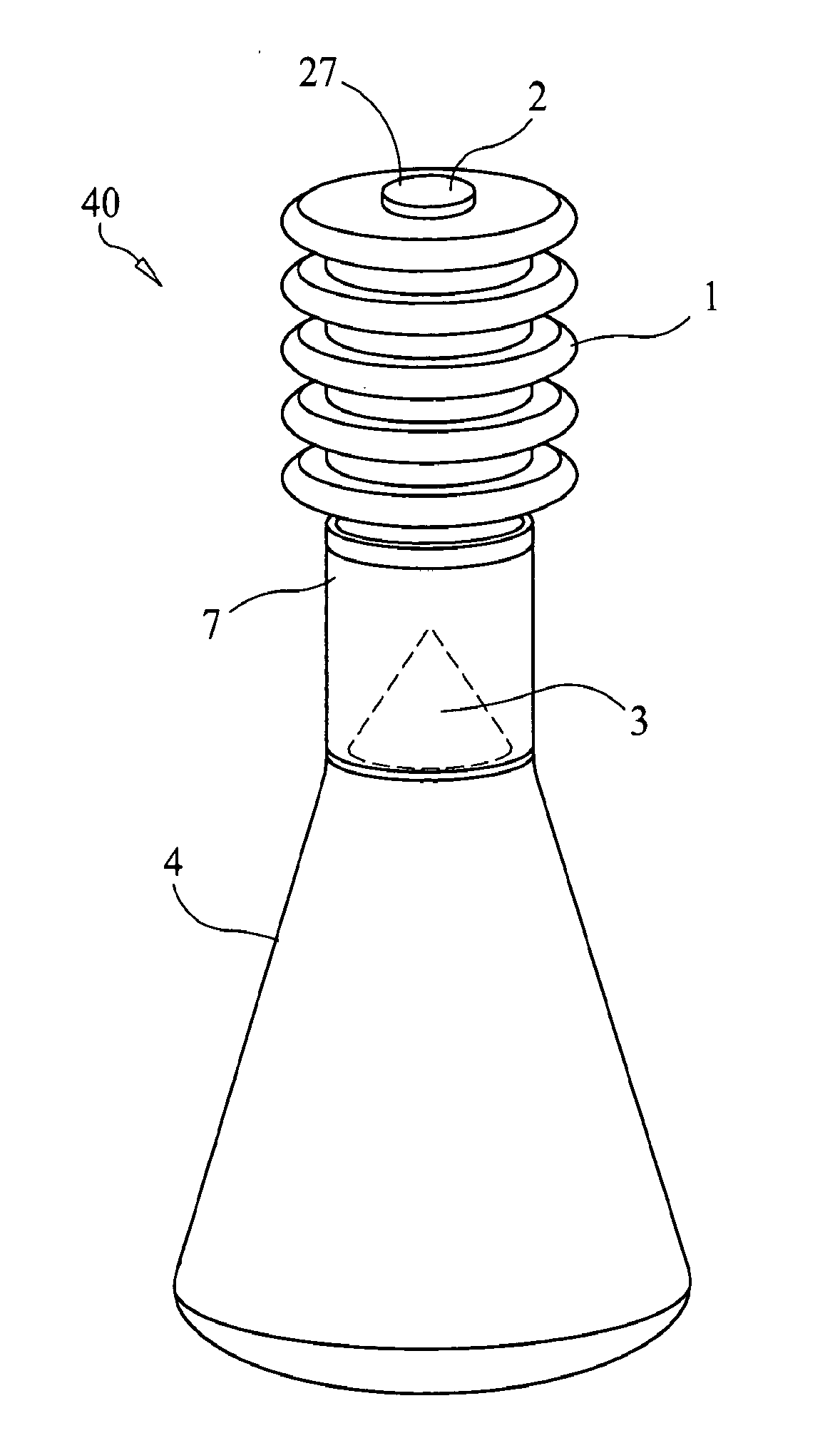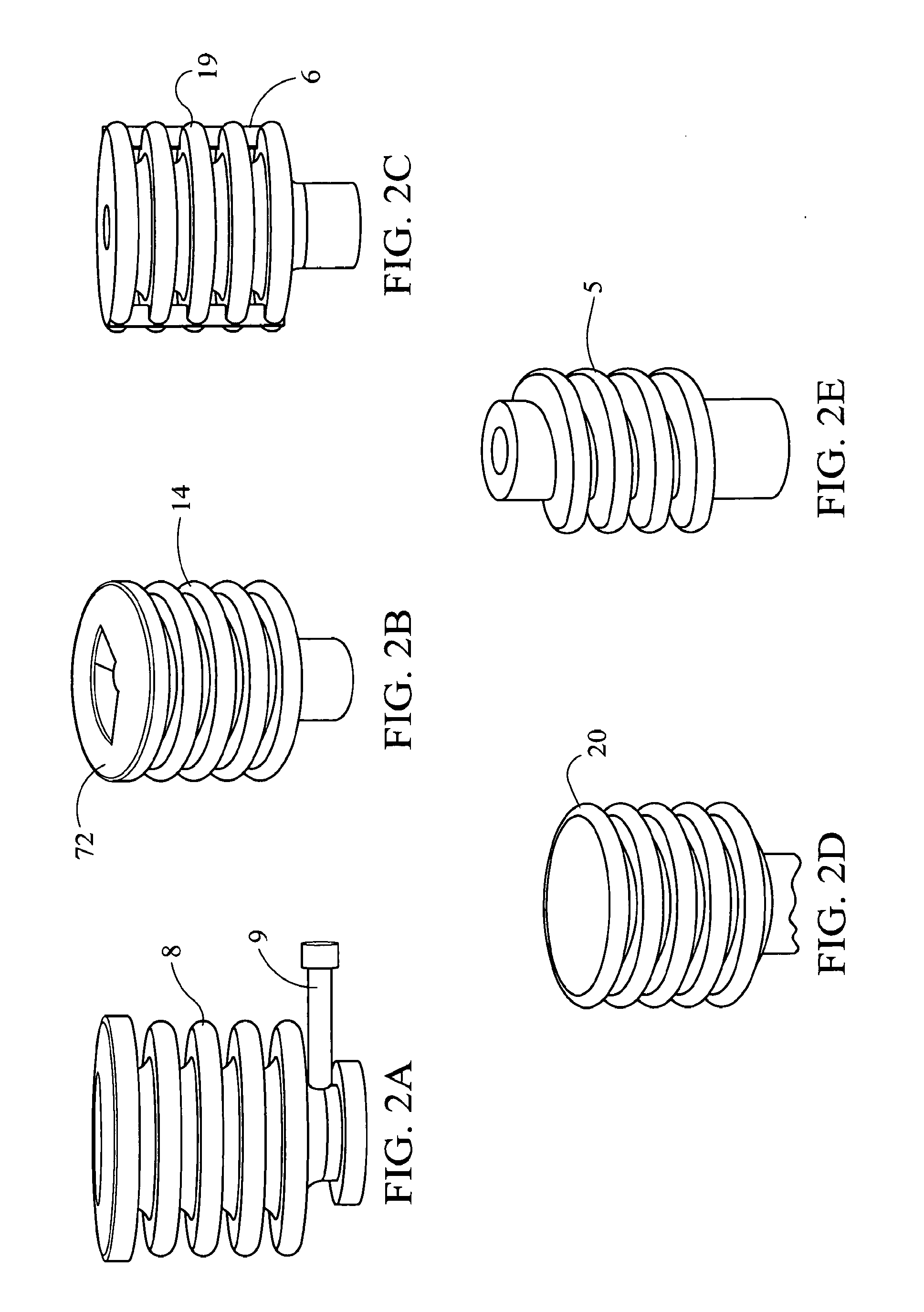Self-contained breathing closure and container
a self-contained, container technology, applied in the field of containers, can solve the problems of slow metabolism, dissolved oxygen often represents the limiting species of the growth rate of microorganisms, and can not be used in water supply installations, etc., to prevent the exchange of airborne particulates or droplets, and enhance gas exchange
- Summary
- Abstract
- Description
- Claims
- Application Information
AI Technical Summary
Benefits of technology
Problems solved by technology
Method used
Image
Examples
working example no.1
WORKING EXAMPLE NO. 1
[0151]The rates of oxygen transfer into an agitated liquid were compared for a preferred embodiment of the present invention (the configuration in FIG. 1 with splashguard from FIG. 18) and a combination of a background art culture system and background art closure. The closure 40 of FIG. 1 was affixed to the top of a 250 ml Pyrex® 4442 shake flask containing 100 ml of water and placed on a vertical vibratory mixing system (LabRAM®, Resodyn Acoustic Mixers, Inc). A background art vented closure (BugStopper™, Whatman) was affixed to an identical flask and placed on a background art orbital shaker (Innova 2100, New Brunswick). Oxygen transfer values in water were evaluated using an optical dissolved sensing patch (PreSens Precision Sensing) with a fast response time using the dynamic gassing out method.
[0152]The results of the oxygen transfer test are presented in FIG. 23 and demonstrate a dramatic improvement in oxygen transfer when the present invention was used....
working example no.2
WORKING EXAMPLE NO. 2
[0154]The performance of a preferred embodiment of the present invention (FIG. 1) was compared to the performance of a combination of a background art culture system and a background art closure in the culturing of several microorganisms. The closure of FIG. 1 was affixed to the top of a 250 ml Pyrex® 4442 shake flask containing 100 ml of water and placed on a vertical vibratory mixing system (LabRAM®, Resodyn Corporation). A background art closure (BugStopper™, Whatman) was affixed to an identical flask and placed on a background art orbital shaker (Innova 2100, New Brunswick).
[0155]In a first experiment, Escherichia coli HB101 transformed with a green florescent protein (GFP) containing plasmid (pGLO) was cultured in 62.5 ml of H15 medium at 37° Centigrade (C). Mean green florescence was monitored using a Guava® easyCyte flow cytometer.
[0156]The results for a Escherichia coli culture are presented in FIGS. 24A-24D. The error bars indicate the standard error of...
PUM
| Property | Measurement | Unit |
|---|---|---|
| thickness | aaaaa | aaaaa |
| cone angle | aaaaa | aaaaa |
| flat plate inclination angle | aaaaa | aaaaa |
Abstract
Description
Claims
Application Information
 Login to View More
Login to View More - R&D
- Intellectual Property
- Life Sciences
- Materials
- Tech Scout
- Unparalleled Data Quality
- Higher Quality Content
- 60% Fewer Hallucinations
Browse by: Latest US Patents, China's latest patents, Technical Efficacy Thesaurus, Application Domain, Technology Topic, Popular Technical Reports.
© 2025 PatSnap. All rights reserved.Legal|Privacy policy|Modern Slavery Act Transparency Statement|Sitemap|About US| Contact US: help@patsnap.com



